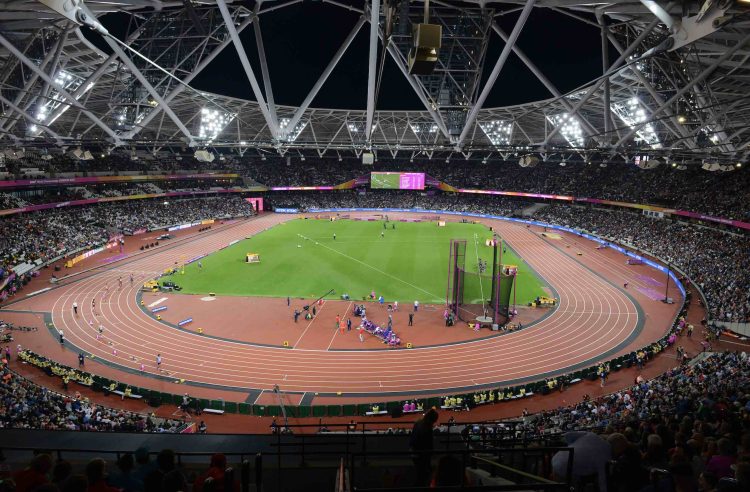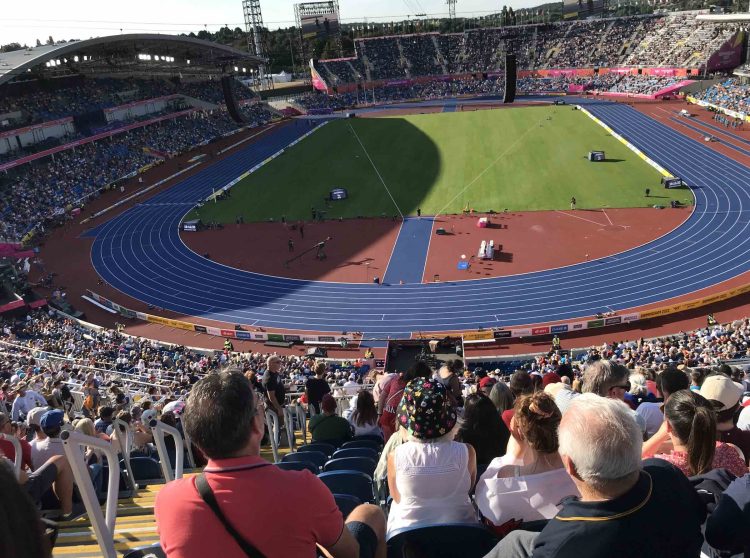The Crystal Palace is an iconic stadium for our sport. It is also in terrible condition. Stuart Weir wrote this important piece about the options for our friends at British Athletics. Does Crystal Palace have a position in the future of British Athletics?
Crystal palace
RelatedPosts
There was an article in the London Times recently about the National Sports Centre at Crystal Palace which used to be the home of track and field in London but which has now fallen into disrepair. It was a timely contribution to the debate about the future home of British elite athletics.
Built in 1964 on the site of the former Crystal Palace Park which had hosted the FA Cup finals (Americans, think Superbowl!) 1895-1914. The athletics stadium had a capacity of 15,000 to 24,000 and hosted athletics for years including the London Grand Prix from 1999-2012. The list of stadium record-holders reads like a who’s who of our sport: Yelena Isanbayeva (3 world records), Michael Johnson, Usain Bolt, Haile Gebrselassie, Javier Sotomayor, Sanya Richards-Ross.
The Times reported: “Sadly, the centre has fallen into a serious state of disrepair. The main swimming pools have been empty for three years. Towards the end of last year, safety concerns regarding the stadium floodlights forced its temporary closure. The indoor track is peppered with pigeon droppings and the roof is leaking. When there is a heavy downpour, the tired old building floods at one end”.

When London hosted the 2012 Olympics, international athletics moving to the London Stadium, now also home to West Ham United (soccer), marked the start of a serious decline. This was partly to demonstrate the Olympic legacy but it also resulted in the old Crystal Palace stadium being “left to rot.”
The timing of the Times article was pertinent as there is an ongoing debate as to where should be the home of track and field in the UK. The London Stadium (the 2012 Olympic Stadium) is mainly used by West Ham United who play about 25 games there each year (August to May). There is a contractual agreement that the stadium must be available for athletics for 50 years but mainly during the month of July. August when the Anniversary Games (Diamond League) was usually held, is during the soccer season.
Apparently converting the stadium from soccer to track and back – taking out seats etc – costs $3.6 million per time. This has led to speculation that the stadium managers might be willing to offer British Athletics, say, $20 million, to tear up the contract; would they accept it? I have heard Ian Beattie, Chair of British Athletics, asked that question several times and he always replies that no such offer has been made. Were $ 20 million to be available, one way to spend it would be to renovate the old Crystal Palace facility.

There is clearly a need for a home of athletics in England, but where should it be? British Athletics has its HQ in Birmingham at the Alexander Stadium. Renovated for the 2022 Commonwealth Games it has a capacity of 18,000 with the potential to add an additional 12,000 seats as happened for the Commonwealth Games. Birmingham Alexander Stadium will host the 2026 European Championships. It is a real track and field stadium; turn up on a midweek evening and you will find athletes from the local club, Birchfield Harriers, running, throwing and jumping. Athletes at all levels from juniors to elite. Alexander Stadium in Birmingham ticks many boxes. Geographically too as it is in the centre of England. The way the Commonwealth Games team bused spectators in and out of local car parks and railways stations were legendary.
There is an argument that HQ has to be in London, one of the world’s great cities. The 2012 Olympic stadium, now called the London Stadium can seat 60,000 but as noted previously is only available for track and field in July. The disadvantage of the London Stadium is that it is a soccer stadium for the rest of the year and totally tacks Birmingham’s “athletics feel”. The capacity is a mixed blessing. 20,000 is a decent crowd for a Diamond League but rattles around in a 60,000-capacity stadium. 12,000 in the old Stockholm (1912 Olympic) Stadium produces a great atmosphere, but that size of crowd makes the Rome Olympic Stadium look empty. I understand that already over 25,000 tickets have been sold for the 2023 Anniversary Games in the London Stadium. Had it been in Birmingham the capacity would have been only 18,000. The London Stadium is in the South of England – where most of the population live – and the stadium is well connected by rail and London Underground.
Crystal Palace had a capacity of up to 24,000 – perhaps more with a revamp. The location is in South London but not near a London Underground station as the network is mainly north of the river. But it would have the potential to be a year-round track and field centre. Of course, the discussion of Crystal Palace is academic unless the millions of dollars are available for the revamp.
There is no easy solution.
Author

Since 2015, Stuart Weir has written for RunBlogRun. He attends about 20 events a year including all most global championships and Diamond Leagues. He enjoys finding the quirky and obscure story.
View all posts






















